Econ unit 2 - microeconomics
1/126
There's no tags or description
Looks like no tags are added yet.
Name | Mastery | Learn | Test | Matching | Spaced |
|---|
No study sessions yet.
127 Terms
demand
quantity of a good/ service that consumers are willing and able to purchase at various prices during a specific period.
demand curve
A graphical representation of the relationship between the price of a good or service and the quantity demanded by consumers.
law of demand
price ↑= quality demanded ↓
non-price determinants of demand
income ↑ = quality demanded ↑ (D → D1)
good preference↑ = quantity demanded ↑ (D → D1)
price of substitute↑ = quantity demanded↑ (D → D1)
number of consumers ↑ = quantity demanded ↑ (D→ D1)
price of complementary goods ↑ = quantity demanded ↓ (D → D2)
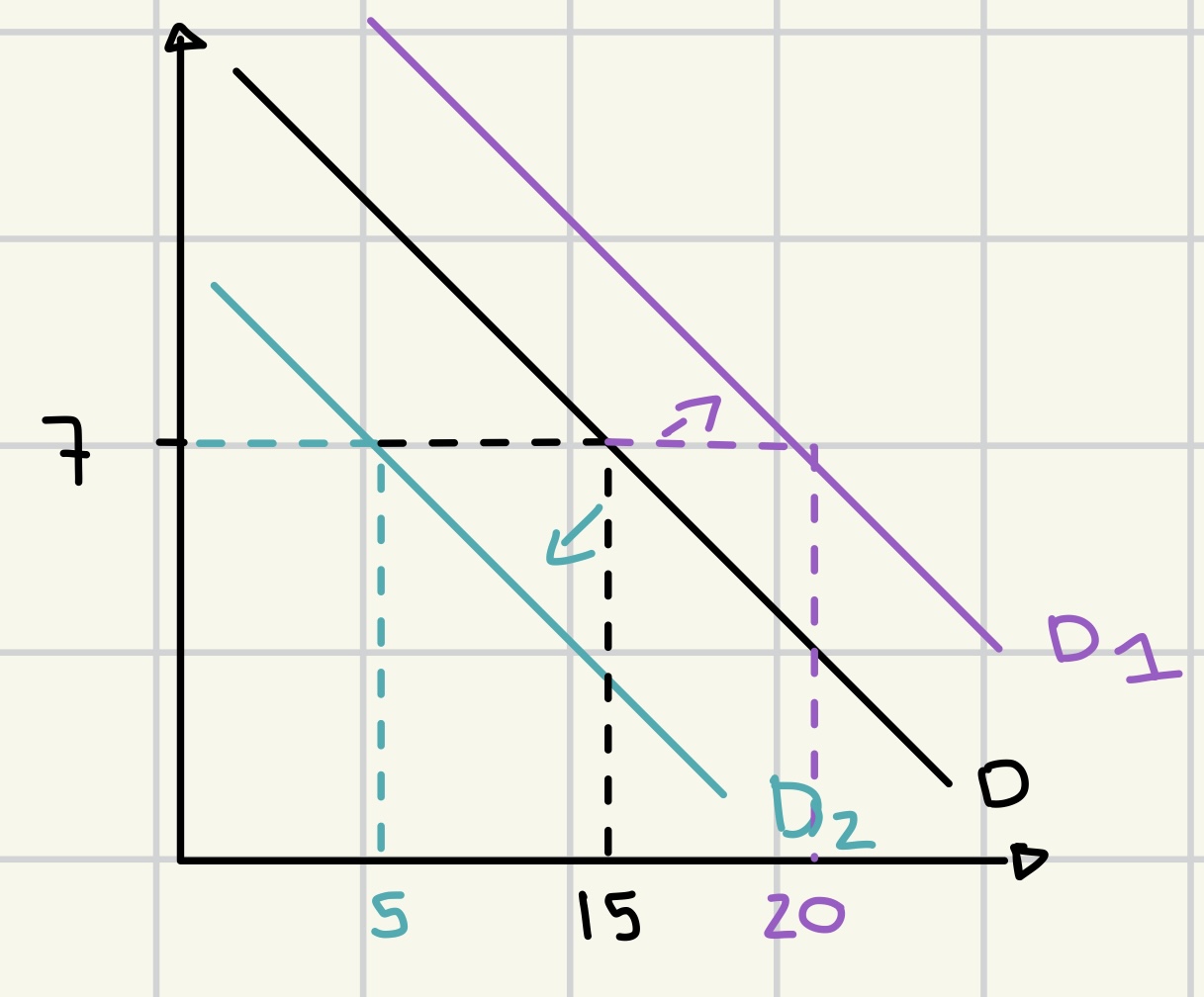
supply
amount of a good or service that producers are willing and able to sell at various prices over a specific time period.
supply curve
a graphical representation of the relationship between quantity supplied and price
law of supply
price ↑ = quantity demanded ↑
non price determinants of supply
subsidies ↑ = supply ↑ (S→ S2)
new technology ↑ = supply ↑ (S→ S2)
competitors ↑ = supply ↑ (S→ S2)
cost of production ↑ = supply ↓ (S→ S1)
taxes ↑ = supply ↓ (S→ S1)
weather disaster = supply ↓ (S→ S1)
opportunity cost of related products ↑ = supply ↓ (S→ S1)

consumer surplus
difference between the amount the consumer is willing to pay for a product and the price they have actually paid
benefit gained by the consumer for purchasing the product at a lower price.
producer surplus
difference between the price producer is willing to sell a product for and the price they actually do
benefit to producers from selling at a higher price than their minimum acceptable price.
producer and consumer surplus graph
supply ↑ = producer/consumer surplus ↑
demand ↑ = producer/consumer surplus ↑

allocative efficiency/ equilibrium
resources are distributed in a way that maximizes total societal welfare
quantity of a good produced is equal to the quantity demanded.
productive efficiency
at minimum average total cost
all resources are utilized effectively.
traditional economic theory
Focuses on supply and demand to determine prices and allocation of resources in a market.
consumer rationality
utility maximization
perfect information
limitations of the assumptions of rational consumer choice
biases
bounded rationality
bounded self-control
bounded selfishness
imperfect information
forms of biases
based on experience
framing ‘20% fat vs 80% fat free’
anchoring (seller suggest a higher price than the real value)
availability bias
bounded rationality theory
individuals make decisions based on the limited information available to them, leading to less-than-optimal choices.
bounded self control
the tendency to struggle with making choices that align with long-term goals due to immediate temptations and distractions.
bounded selfishness
the tendency of individuals to prioritize their own interests over the collective good, often leading to suboptimal outcomes for the group.
imperfect information
the situation where all relevant information is not available to consumers or producers, leading to suboptimal decision-making in markets.
types of choice
default
restricted
mandated
nudge theory EAST
using reinforcement and indirect suggestions can influence the motivation and decision-making of individuals.
E - easy → simplify
A - attractive → gain people’s attention
S - social → individuals may be influenced by others doing said thing
T - timely → identify when people are most responsive
advantages of nudge theory
cost effective
preserves freedom of choice
improves public health
improves decision making
improves sustainability
encourages positive behavior change.
profit maximization
the process of increasing profit by determining the most effective level of production and pricing strategy.
marginal costs = marginal revenue
→ beyond this point with each unit produced marginal loss occurs
p1 = selling price
c1 = average cost
super-normal profit = total revenue> total costs
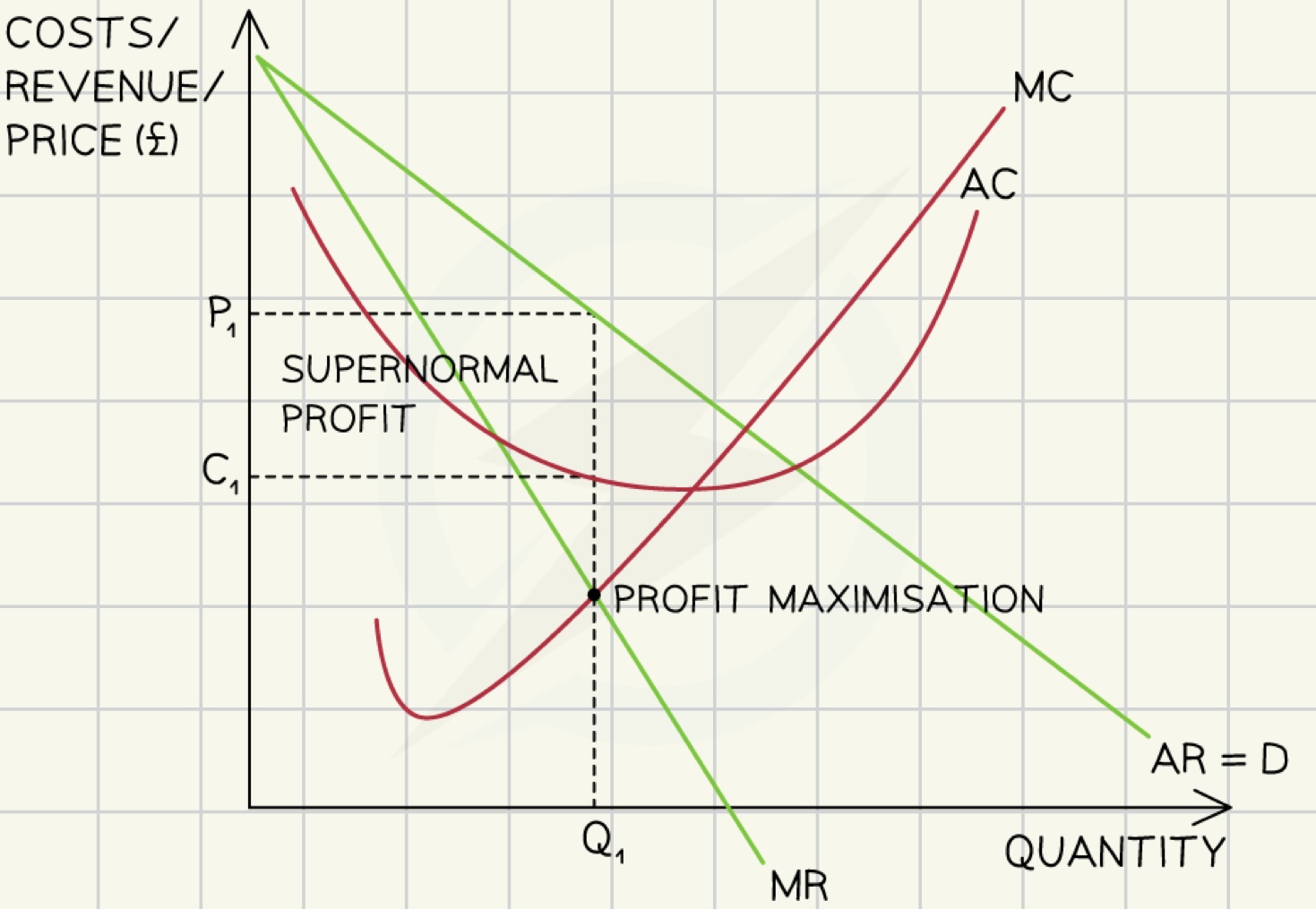
advantages of profit maximization
enables financial stability and growth
enhances shareholder values
efficient allocation of resources
drives innovation and competitiveness
disadvantages of profit maximization
ethical and social concerns
may neglect long-term sustainability and employee welfare.
lack of knowledge about the point of profit maximization
often results in higher prices for consumers
growth
an increase in the capacity of an economy to produce goods and services over time, often measured by GDP.
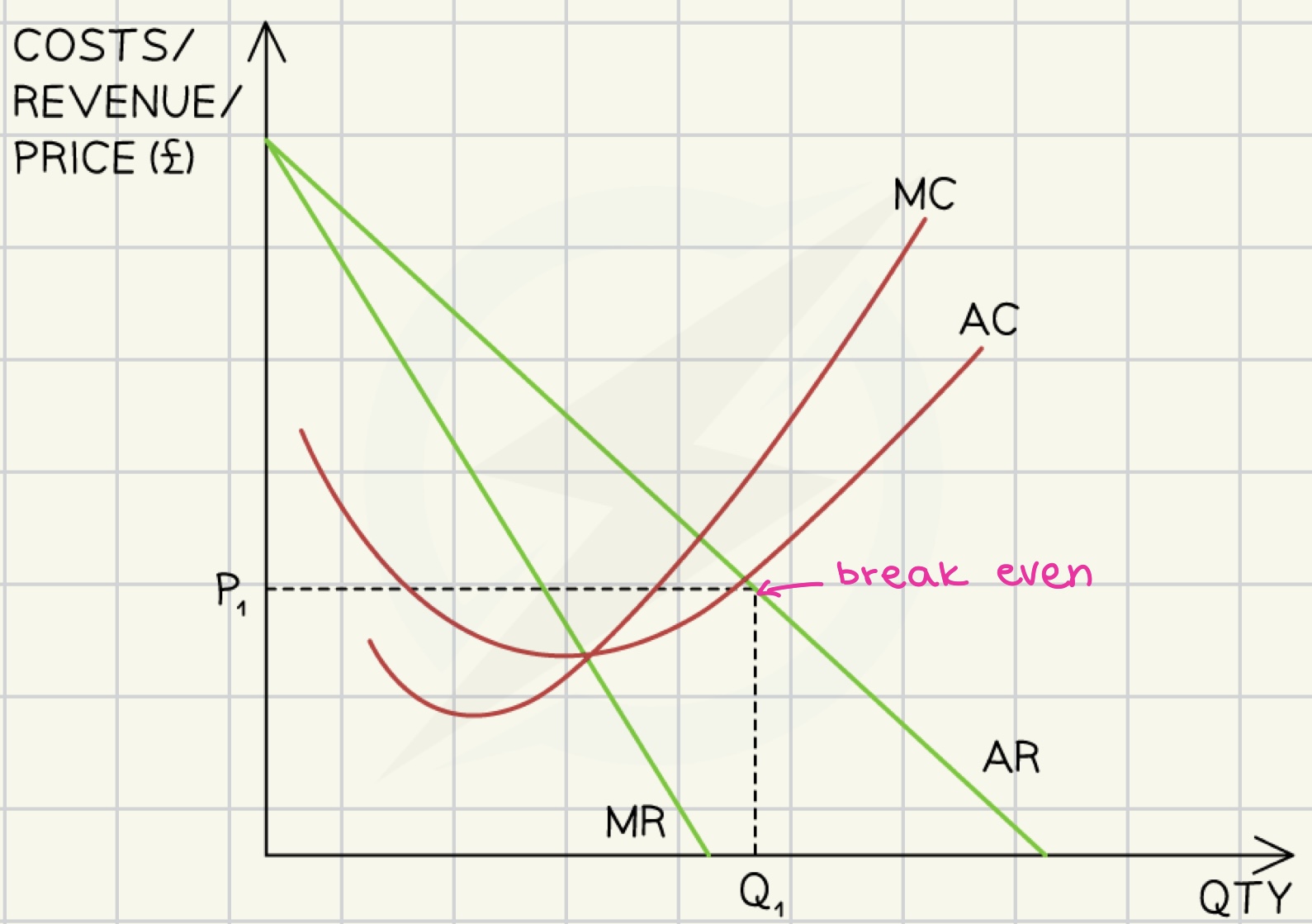
price elasticity of demand
measure of how responsible the quality demanded is to a change in its price
indicates consumers’ sensitivity to price changes
price↑ = demand ↓
price elasticity of demand formula
PED = % change in quantity demanded / % change in price
interpreting PED values
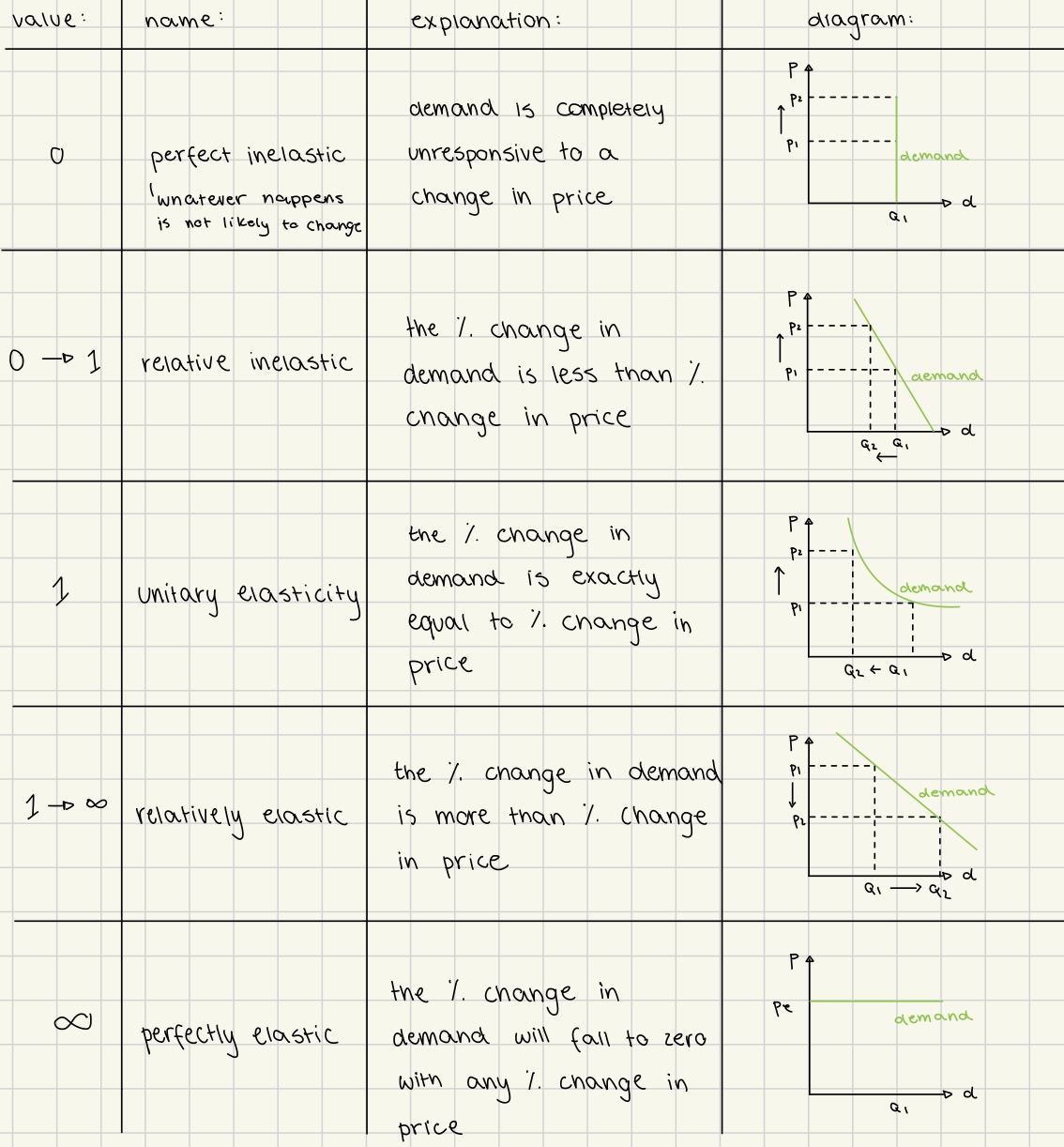
determinants of PED
availability of substitutes ↑ = PED ↑
addictiveness of the product ↑ = PED↓
price of products as proportion of income ↓ = PED ↓
consumers are less responsive to price changes of cheap products
time period
short term = low PED
long term = high PED
total revenue rule
to maximize revenue businesses should
increase the price of products that are inelastic in demand
big increase in price results in small decrease in demand
decrease the price of products that are elastic in demand
small decrease in price results in big increase in demand
income elasticity of demand YED
measures the responsiveness of demand for a product to changes in consumer income
positive YED indicates that a good is a normal good,
negative YED signifies an inferior good.
influenced by factors that affect the wages
minimum wage
taxes
YED formula
YED = % change in quantity demanded / % change in income
YED values
inferior goods
YED<0
income ↑ = demand ↓
normal goods
YED>0
income↑ = demand↑
luxury goods
YED> 1
income↑ = demand↑↑
price elasticity of supply PES
measures the responsiveness of the quantity supplied of a good to changes in its price.
higher PES value indicates that supply is more responsive to price changes.
PES formula
PES = % change in quantity supplied / % change in price
PES values
0 → perfectly inelastic/ unresponsive
0-1 → relatively inelastic
1→ relatively elastic
1-∞→ perfectly elastic/fully responsive
determinants of PES
production time ↑= PES↑
availability of resources↑ = PES ↑
flexibility of the production process = PES ↑
reasons for government interventions into the market
to support firms
intervene to support key industries
to promote equity
intervene to reduce opportunity gap between rich and poor
to collect government revenue
provision of essential services, public and merit goods
to support poorer households
to correct market failures
intervene to influence level of consumption/ production
methods of government interventions
indirect taxes
subsidies
price controls
price ceilling
price floor
taxes types
direct
income tax
indirect
goods and services tax
direct taxes types
progressive (more you earn more you pay, tax brackets)
flat/ fixed
regressive (more you earn less you pay)
indirect taxes types
general taxes (on all goods and services)
excise taxes
on alcohol
tobacco
sugar
indirect taxes
imposed on government causing supply curve to shift left
ad valorem VAT indirect tax
amount of good/service↑ = tax↑
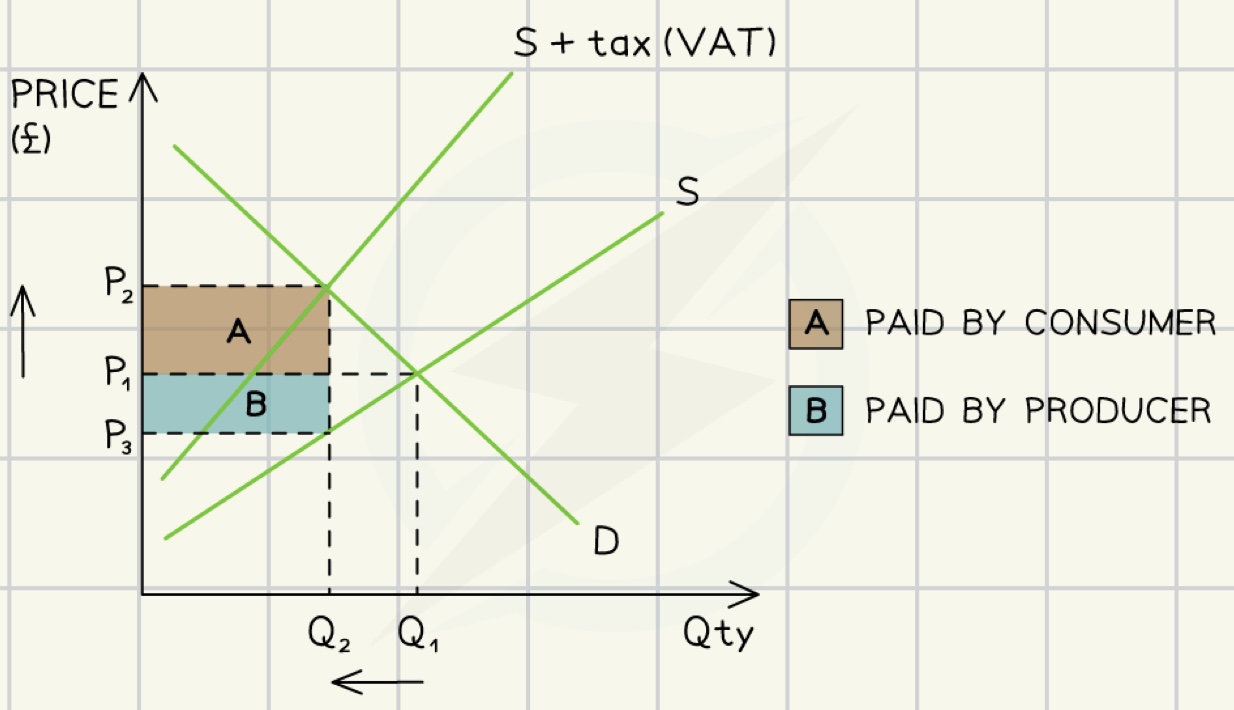
specific indirect tax
fixed tax per unit of output
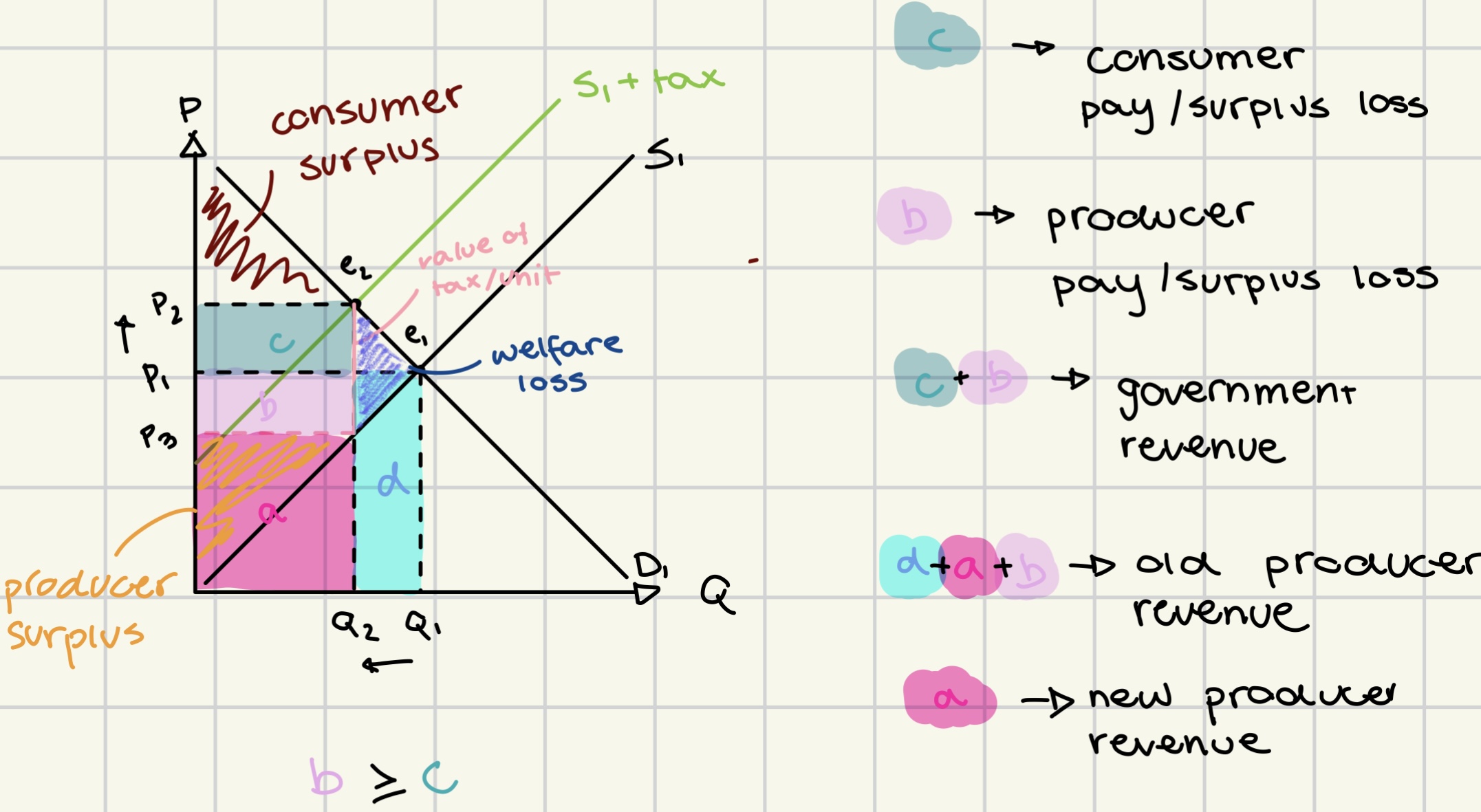
welfare loss
cost to society caused by the lack of efficiency in the allocation of resources
advantages of indirect taxes
raises price and lowers demand for demerit goods
raises revenue for government
disadvantages of indirect taxes
tax may be ineffective on demerit goods
helps develop illegal/ grey markets
may lead to staff layover due to lower demand
subsidies
financial assistance given by the government
to increase production
to increase provision of merit goods
to reduce costs
to support employment
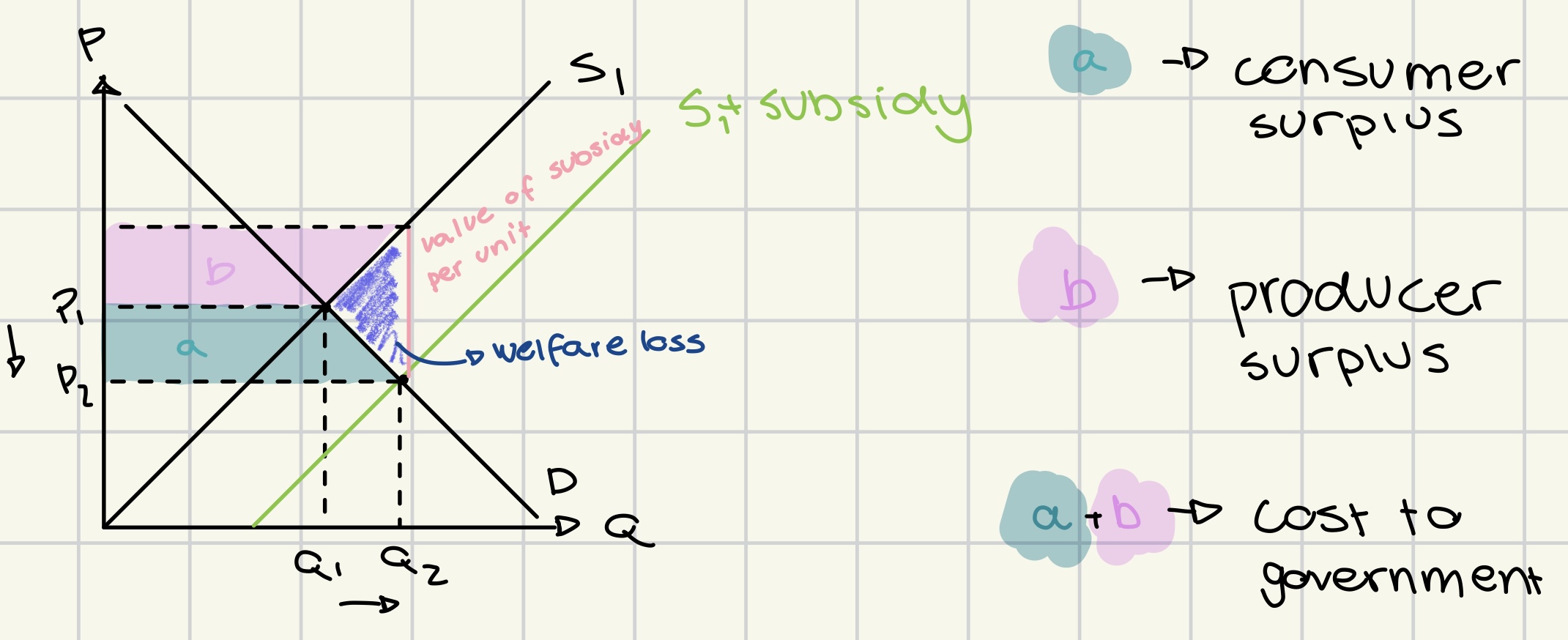
advantages of subsidies
financial benefits for producers
lowers prices for consumers
increases supply of merit goods
wealth redistribution
may benefit lower-income individuals
encourages economic growth.
disadvantages of subsidies
opportunity cost
over-dependency
may stifle innovation and efficiency improvements
fairness concerns
mis-allocation of resources
fossil fuel subsidy may discourage investment in green energy
environmental and social impacts
price controls
government regulations that set maximum or minimum prices for goods and services to stabilize the economy.
price ceiling
government-set maximum price that can be charged for a good or service
to protect consumers from excessively high prices.
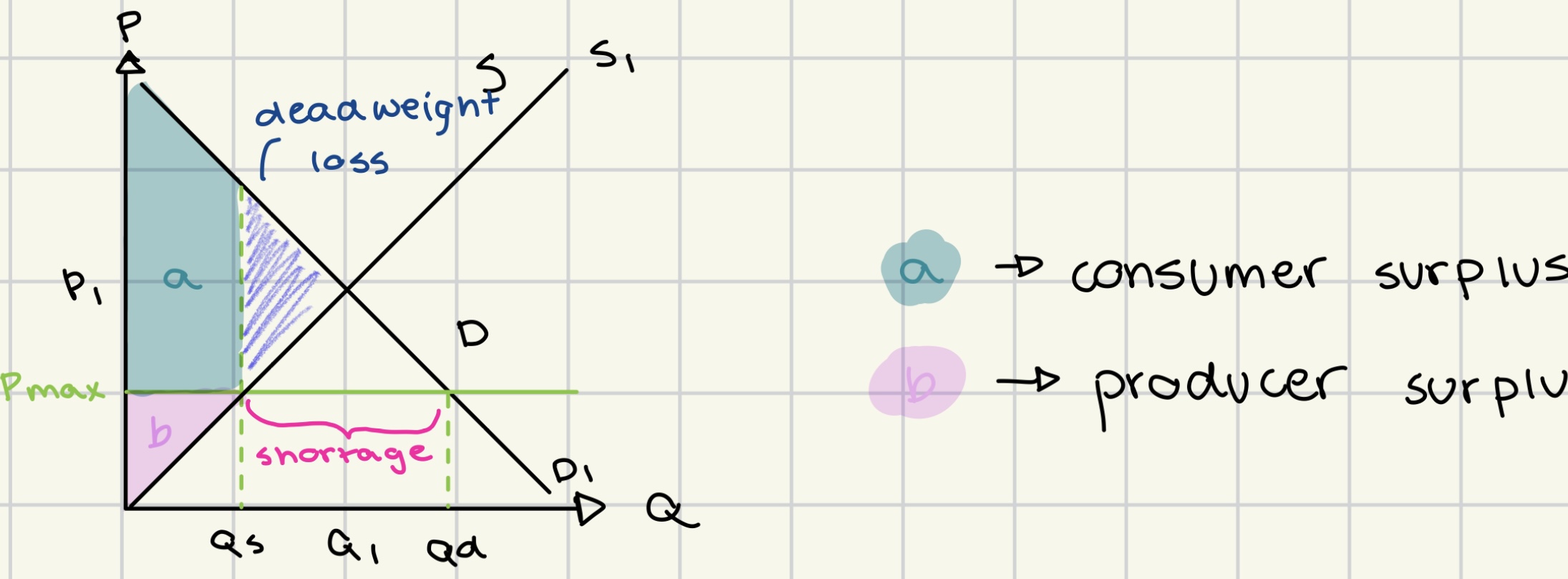
government use of price ceiling
long period of time
rent control
medicine for chronic conditions
short period of time
to stabilize markets that have increased prices due to unusual context
advantages of price ceiling
increased consumer surplus
benefit from lower prices
can protect vulnerable consumers during disasters
can prevent monopolies from setting excessively high prices
disadvantages of price ceiling
shortages
decreased producer surplus
reduces quality
wastage/ over-consumption/ inefficient allocation of scarce resources
creation of illegal/ grey markets
government may have to supply the product to meet the excess demand of necessities
fixed supply and price ceiling (concert tickets)
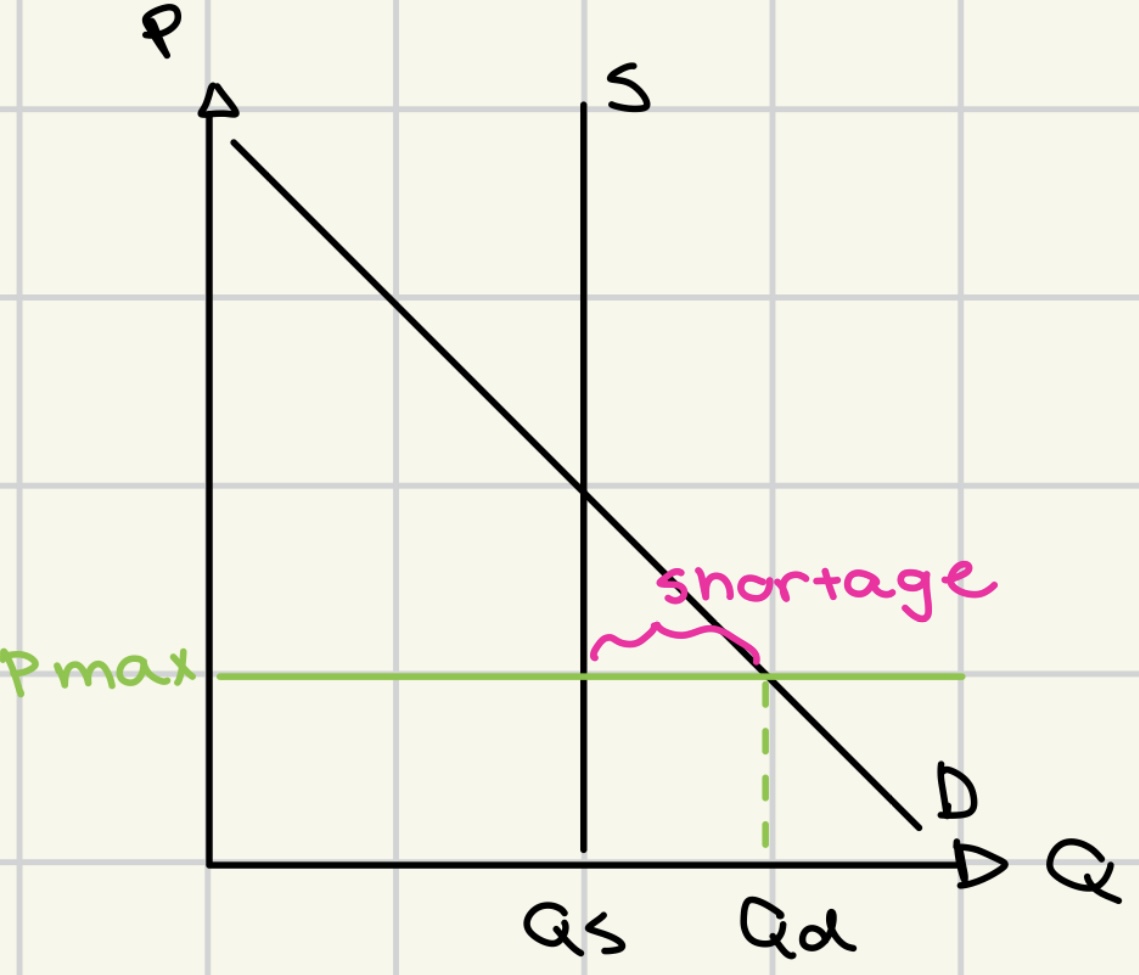
price floor
a minimum price set by the government to prevent prices from being too low
to ensure producers have a fair price
often applied in agricultural markets
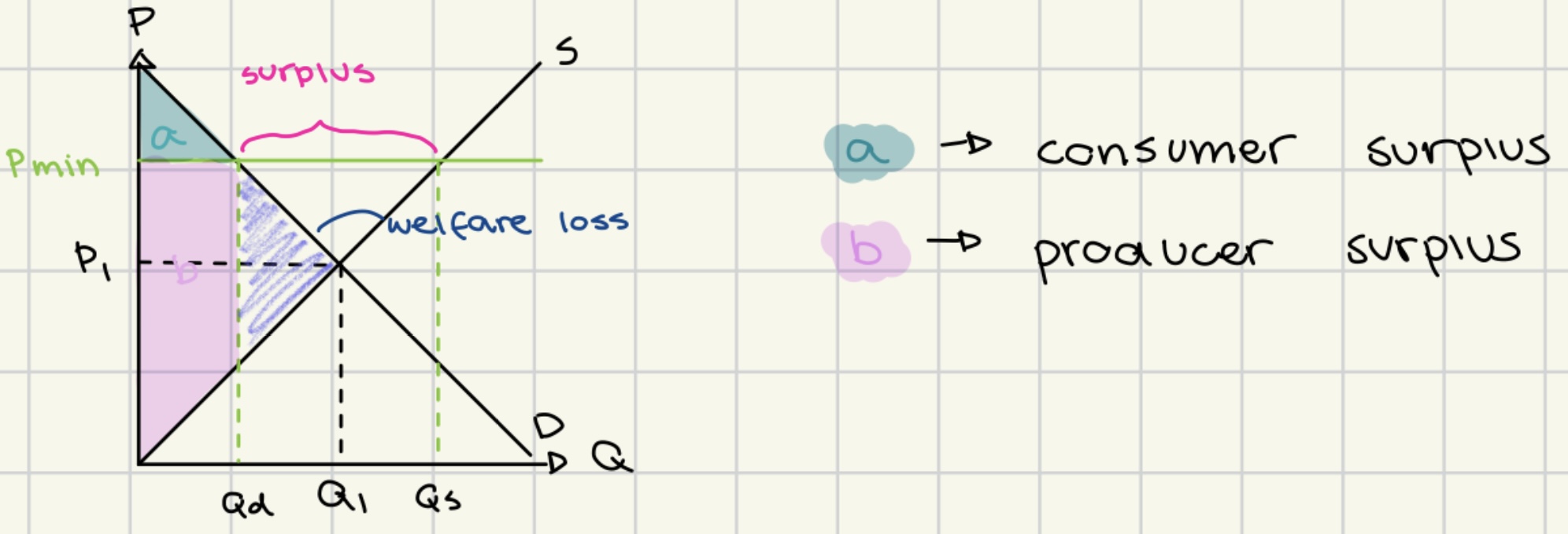
government use of price floor
help producers earn more in times of crisis
decrease consumption of a demerit good
to protect workers from wage exploitation
minimal wage
advantages of price floor
increased producer surplus
minimal compensation secured for suppliers
prevention of price fluctuations and market stability
disadvantages of price floor
supply surplus
decreased consumer surplus
potential unemployment
increased prices for consumers
black markets may emerge.
minimum wage
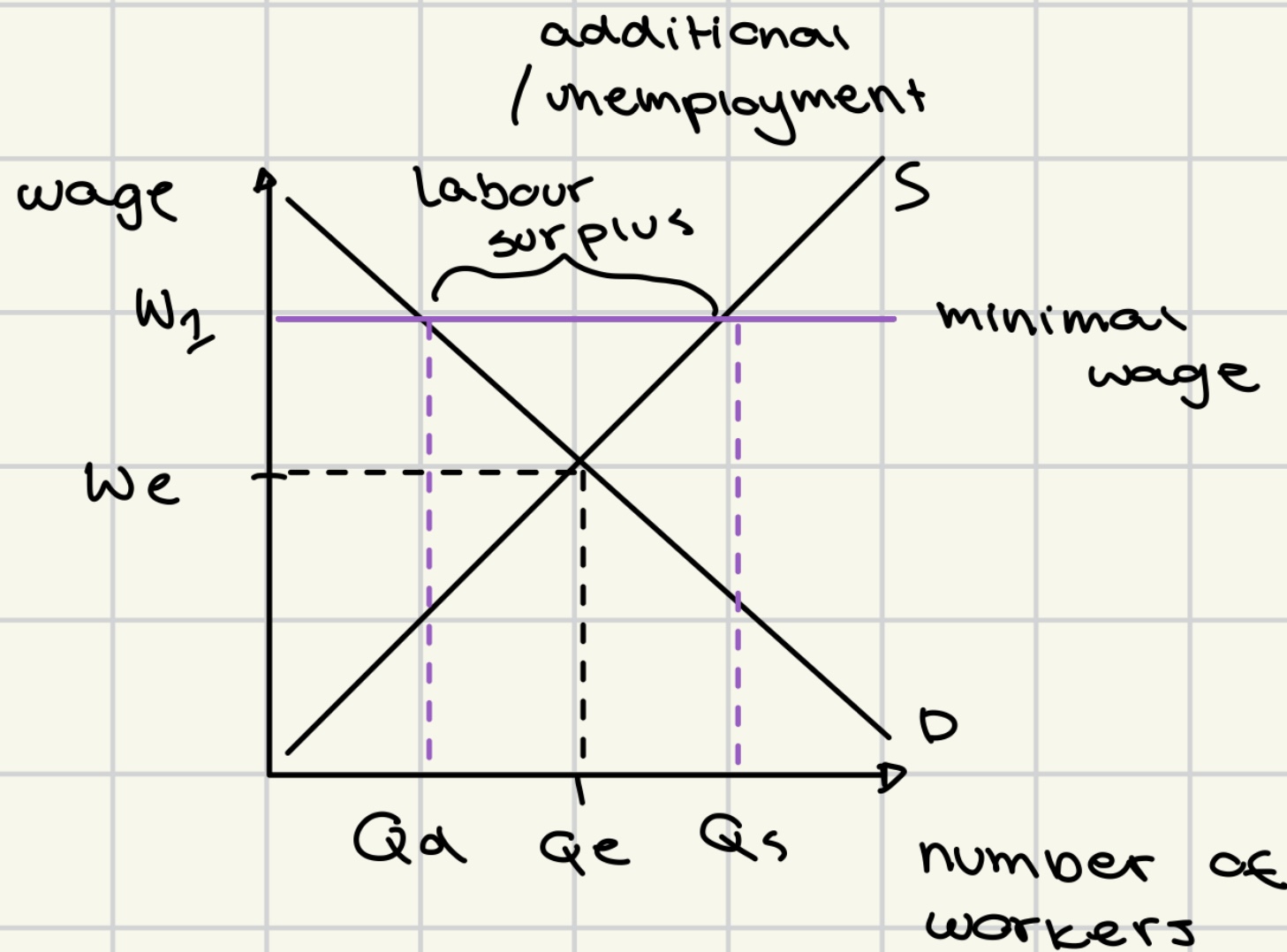
advantages of minimum wage
increased income for workers
reduction of poverty
improved worker productivity and morale.
disadvantages of minimum wage
potential job loss
higher costs od production
reduced demand for low-skilled labor
market failure
occurs when the allocation of resources, goods and services is less than optimal
causes of market failures
public goods
common pool resources
negative externalities of consumption
negative externalities of production
positive externalities of consumption
positive externalities of production
marginal private benefit MPB
the additional benefit received by consumers from consuming one more unit of a good or service.
marginal private cost MPC
the additional cost incurred by producers for producing one more unit of a good or service.
marginal social benefit MSB
the total benefit to society from the consumption of one more unit of a good or service.
marginal social cost MSC
the total cost to society of producing one more unit of a good or service.
socially optimum output
MSB = MSC
level of output desired without market failure
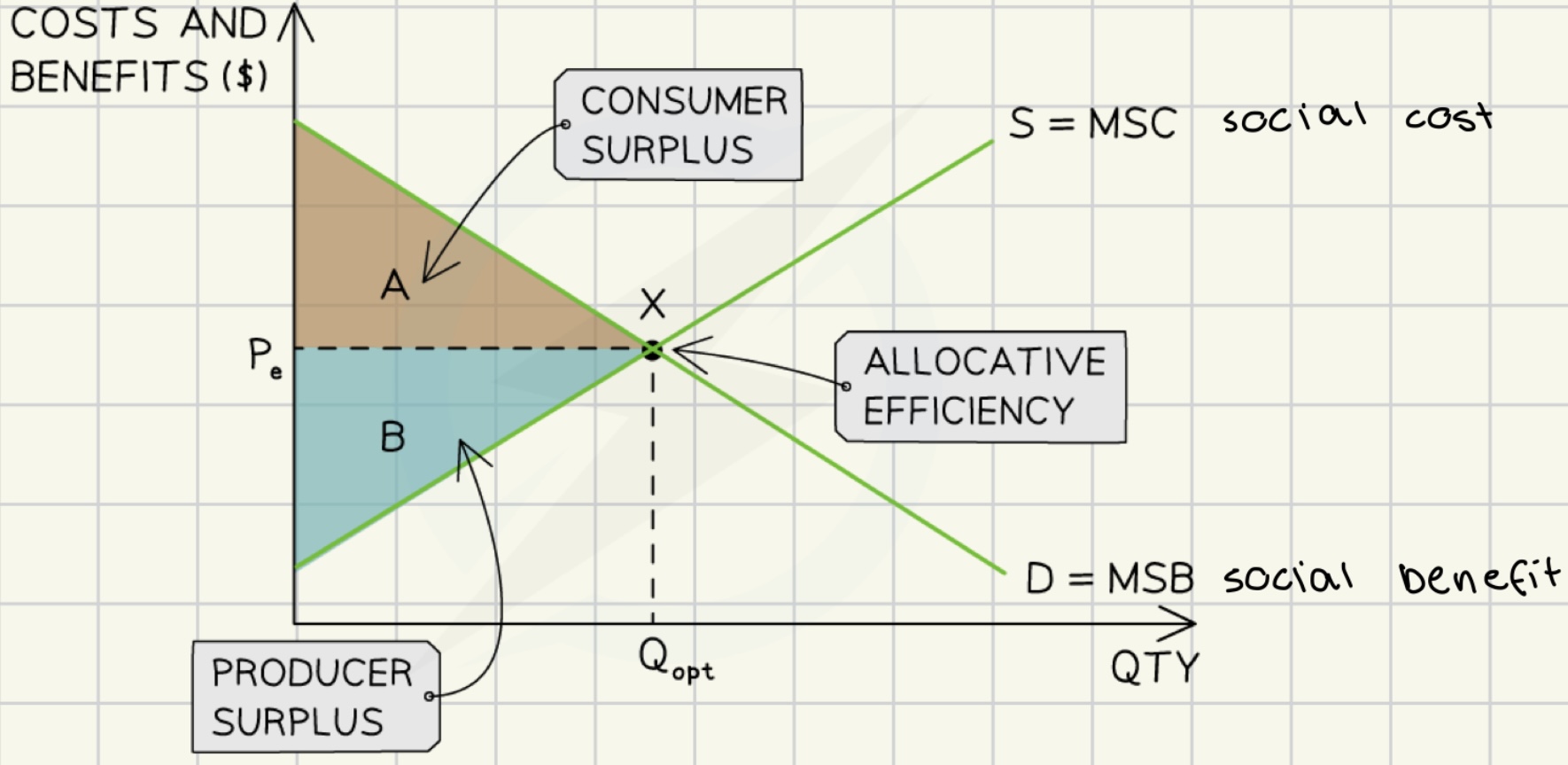
negative externalities of production
created during production
failing due to over-provision
producers only consider private and not external costs
air pollution, water contamination, health problem
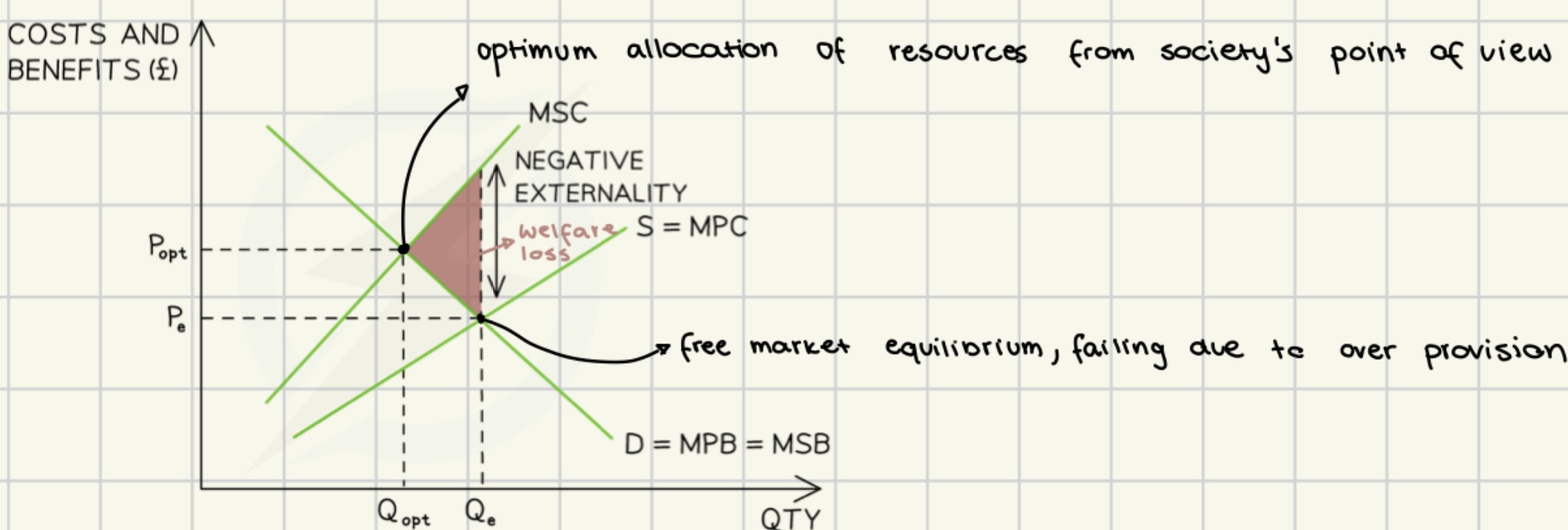
ways of correcting negative externality of production
taxation
regulation and legislation
subsidies
tradable permits
negative externalities of consumption
caused during consumption of demerit goods
failing due to over-consumption
consumers consider only private costs and not external
waste
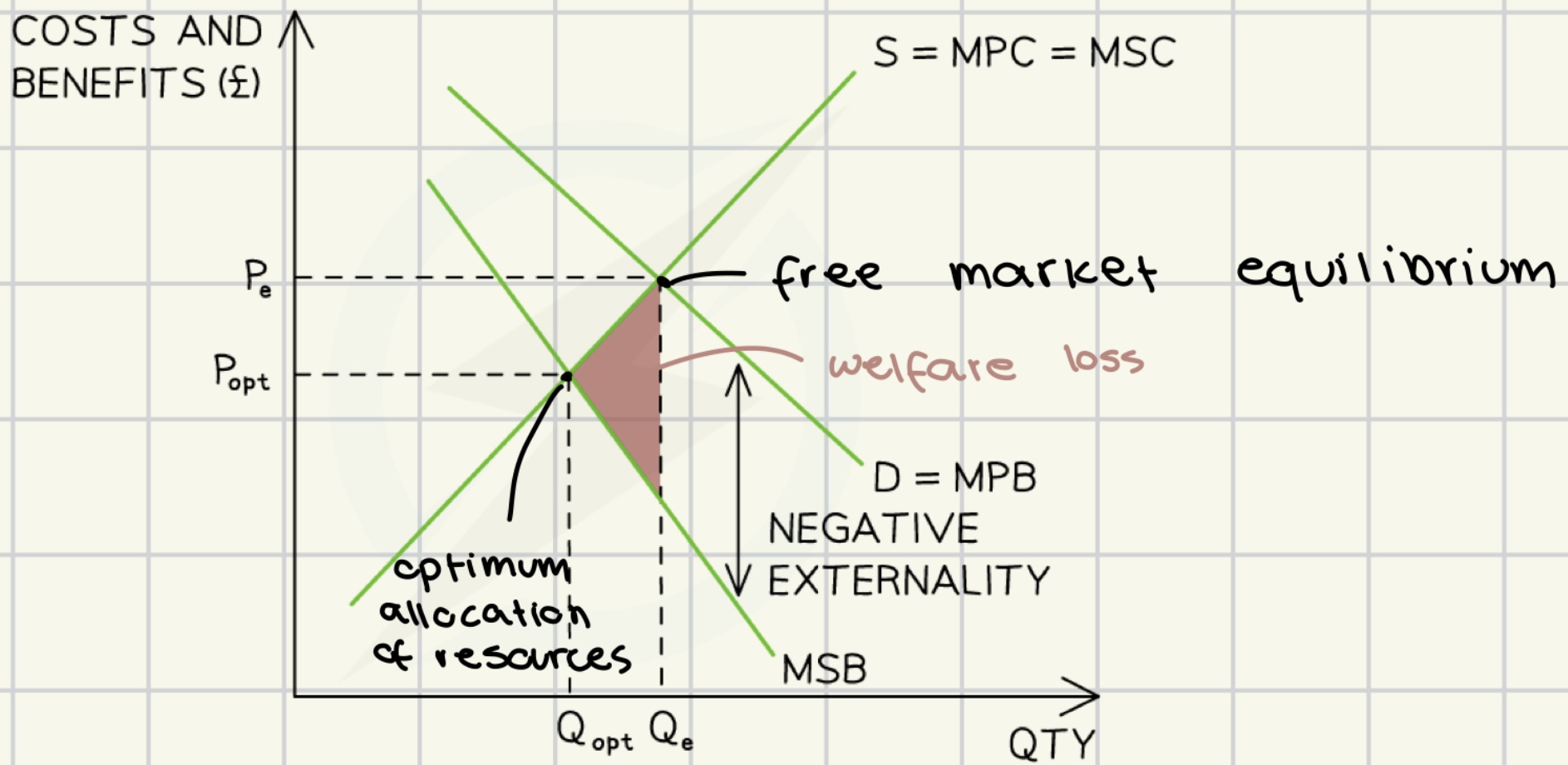
ways of correcting negative externalities of consumption
education
taxation
regulation
campaigns and advertisements to improve consumer behavior
demerit goods
Goods that are considered harmful to individuals and society
merit goods
Goods that are deemed beneficial for individuals and society, often under-consumed if left to the market.
positive externalities of production
created during production
market is failing due to under-provision
only private benefits are considered by producers and not external
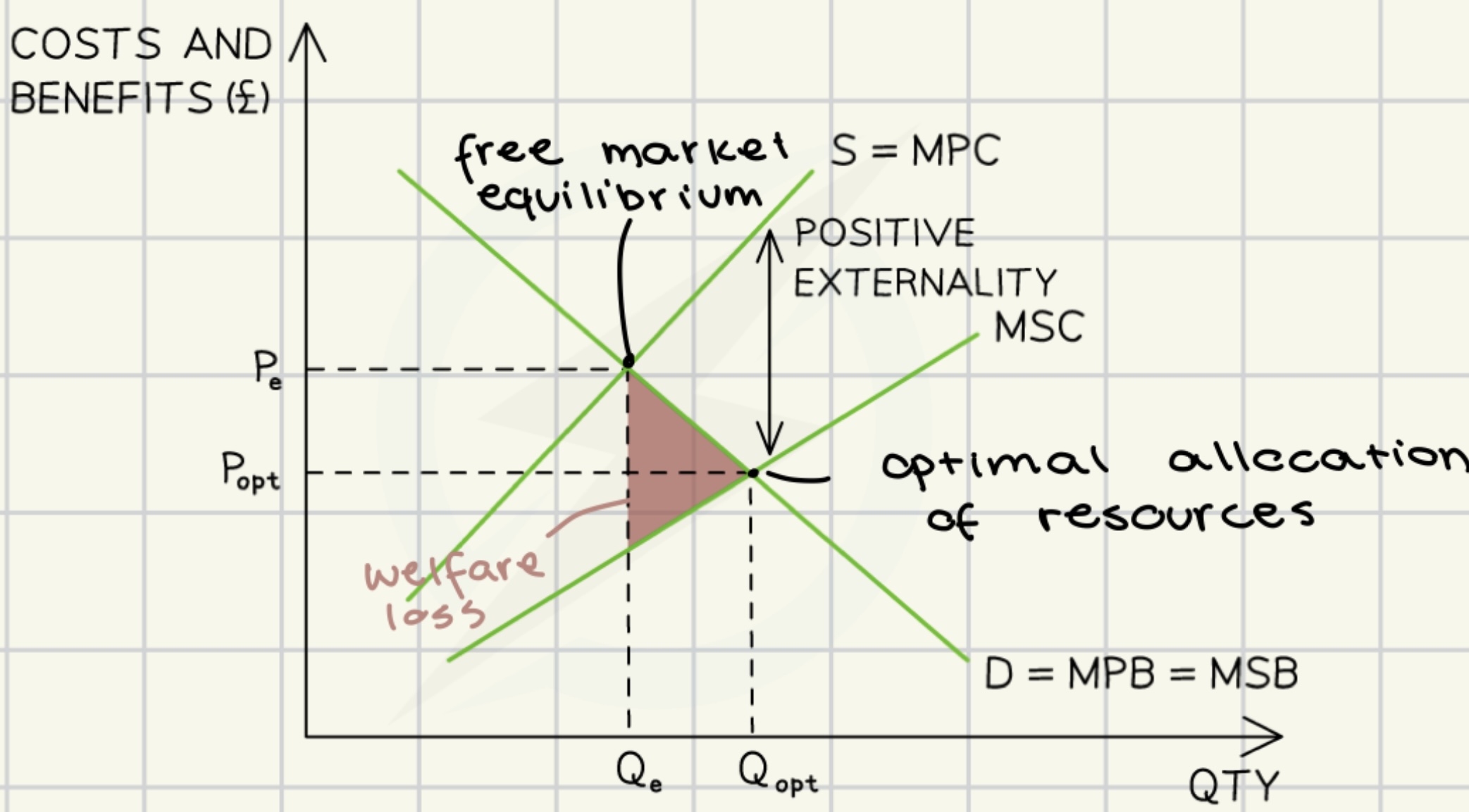
ways of correcting positive externalities of production
subsidies
regulations
direct government provision of goods that enhance social benefits.
price floor
positive externalities of consumption
created during consumption of merit goods
failing due to under-consumption
customers only consider private benefit and not external
ways of correcting positive externalities of consumption
subsidies to consumers
public awareness campaigns
government provision of merit goods
consumer nudges
perfect/ symmetric information
A situation where all consumers and producers have equal access to all relevant information, leading to optimal decision-making in the market.
imperfect/ asymmetric information
A situation where one party in a transaction has more or better information than the other, leading to suboptimal decision-making in the market.
government responses to assymetric information
government responses
regulation
provision of information
licensure (obtaining a license by service/ good provider)
private responses
screening/ research by buyers
signalling by sellers
eg. warranties, brand name, service records
moral hazard
when one party takes risks, but doesn’t face full costs of the risks because the full costs are borne by the other party
buyers of insurance change their behavior after obtaining insurance, so that the outcome works against the interests of the seller of insurance
market structures
perfect competition
imperfect competition
monopolistic competition
oligopoly
monopoly

perfect competition
A market structure characterized by
many small firms
homogeneous products
no barriers to entry or exit
no market power
perfect knowledge
perfect competition
leading to optimal outcomes for consumers and producers.
eg. agriculture
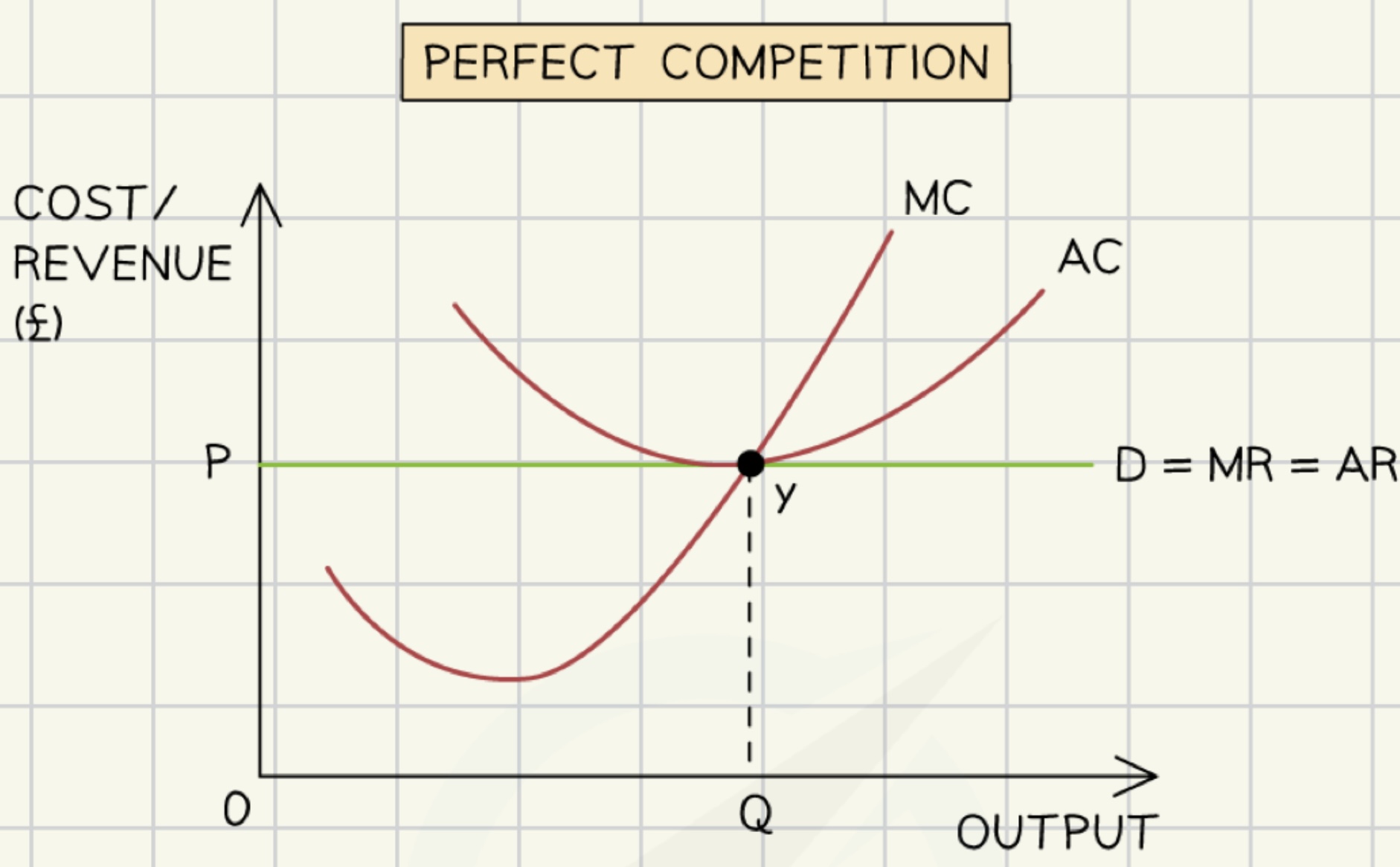
imperfect competition
A market structure where individual firms have some control over price due to product differentiation, which results in a range of firm market power and potentially inefficient outcomes.
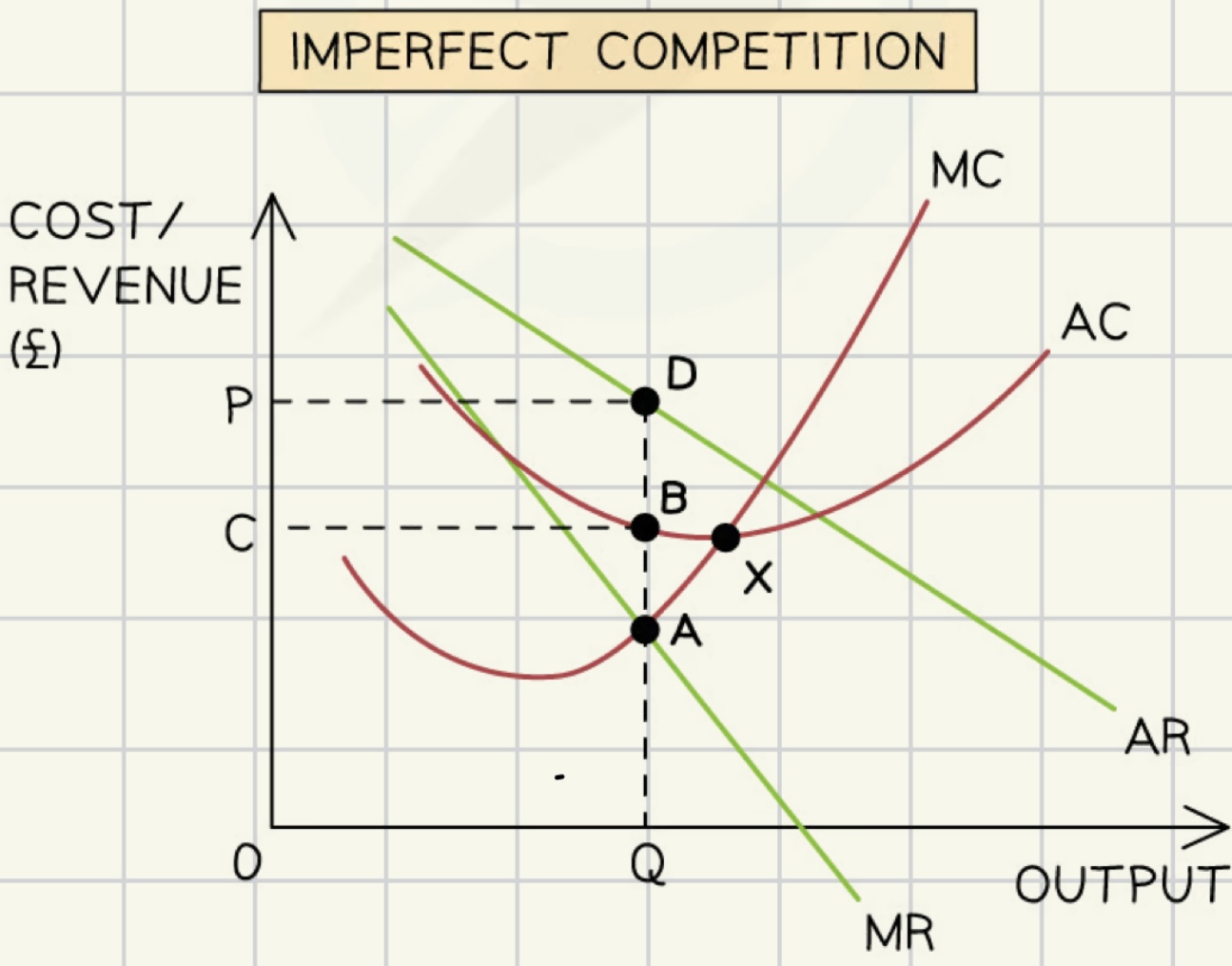
monopolistic competition
many relatively small companies
differentiated products
low barriers to entry
some market power
imperfect knowledge among consumers
good amount of competition
eg. restaurants, computer games, books, furniture
oligopoly
few large companies
mutual interdependence
differentiated or homogeneous products
high barriers of entry
significant market power
imperfect knowledge
some competition
eg. cars,household appliances, detergents, cereal
monopoly
one large company
unique product
no close substitutes
high to impossible barriers of entry
complete market power
imperfect knowledge
no competition
eg. public utilities
profit maximisation
profit = total revenue - total costs
break even/ normal profit
total revenue = total costs
abnormal profit
total revenue > total costs
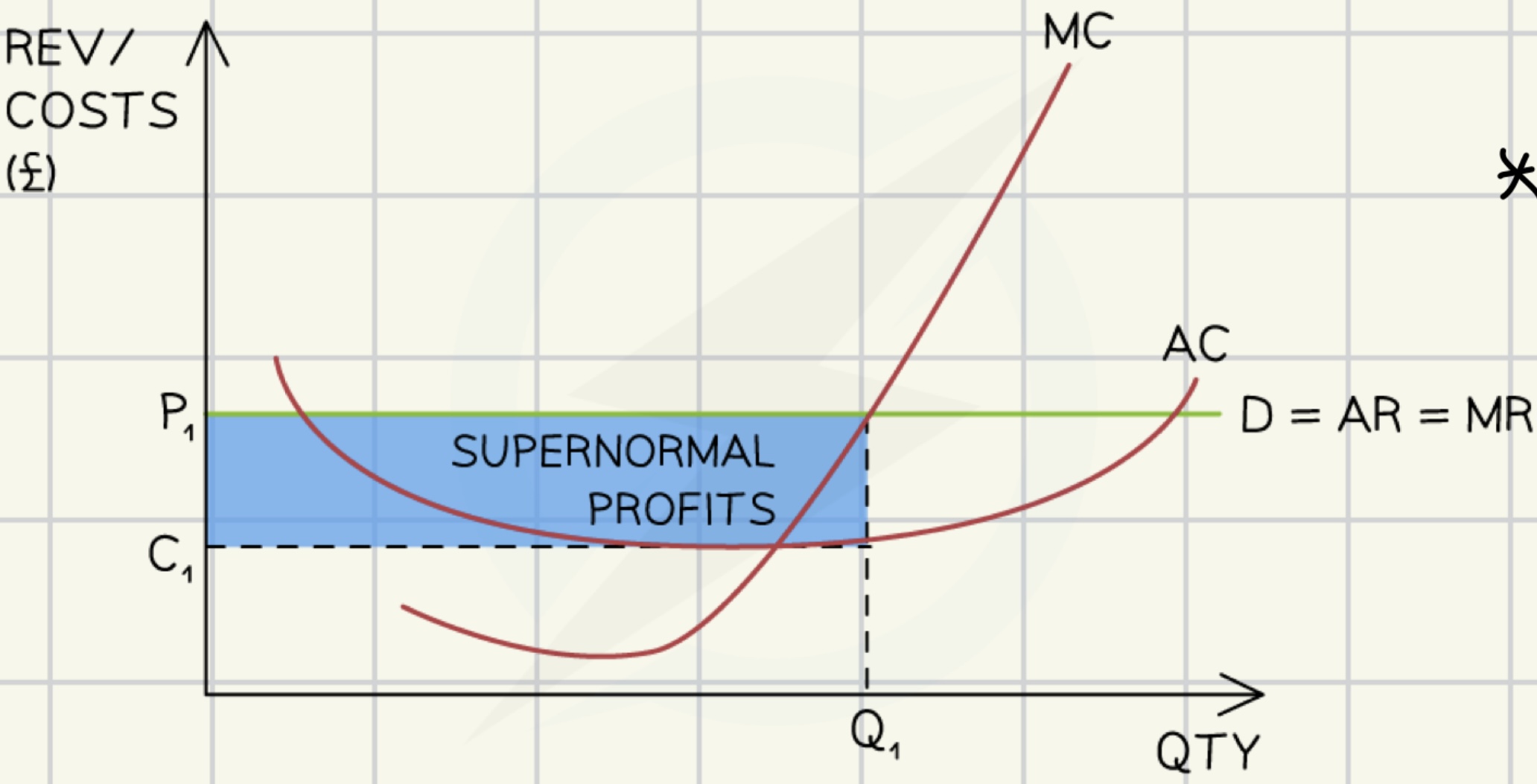
profit loss
total revenue < total costs
profit maximisation rule
a firm should continue producing additional units until
marginal costs MC = marginal revenue MR
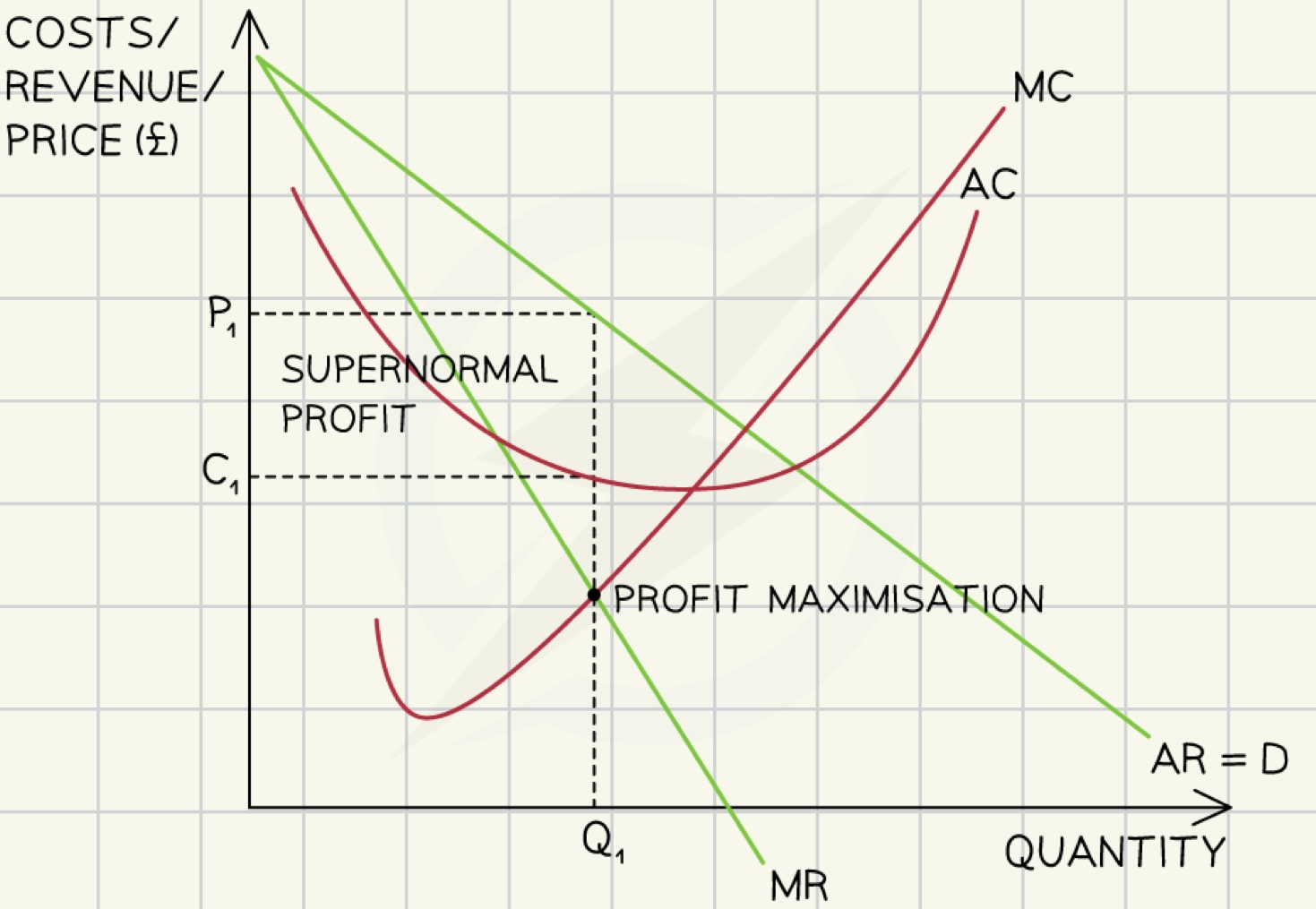
marginal costs MC
change in total costs resulting from additional unit produced
marginal revenue MR
the increase in revenue resulting from an additional unit produced